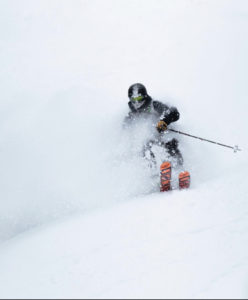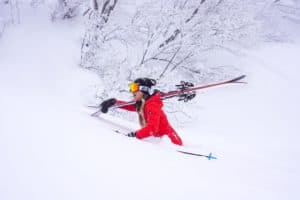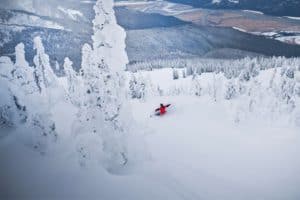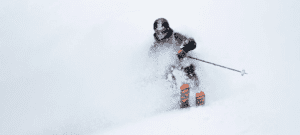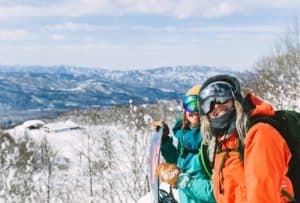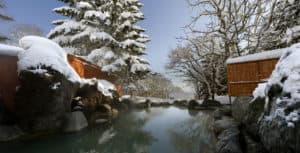Ski Australia vs Ski Japan
The snow gods are fickle creatures. When they bring the goods they bring the goods, but when they don’t, things become dire. We pray and we postulate and it comes; it always does. But it’s different every year and despite this, we spend our hard-earned dollars on ski holidays regardless of whether it rains, hails or, indeed, snows. So what’s it really like skiing in Australia vs. skiing in Japan?
With many people planning to make the pilgrimage to the snowy mountains of Australia each year, and others planning overseas holidays to Japan, we thought the time was nigh for comparison between the two. Keep reading to find out everything you need to know about skiing in Australia vs skiing in Japan.
Snowfall
Sydney
Getting out of the gates early isn’t always the best indicator of the season to come, but it certainly gets the buzz going. If we cast our eye over the seasonal snowfall records for Australia, it’s hard to draw any real pattern of occurrence to make a solid prediction. However, we can conclude that anything in excess of three metres of snowfall is a bumper season. Generally, snowfall levels fluctuate between one and three metres. Anything on either side precipitates either an above-average season or a below-average season.
Japan
Japan has developed a reputation for having some of the best powder snow in the world, but does it really snow that much? If we take Hakuba for example, a good season pushes well above six metres of snowfall at a base elevation of approximately 700m. As Hakuba rises up to around 3000m on its highest peaks, a reflection of snowfall at base elevation isn’t always indicative of what’s happening at the top of the resorts. A bad season, like the one experienced in 2015/2016, only brought a shade over 3m at town level/base elevation.
If we directly compare the Australian season to the Japanese season it would appear that the Australian bumper season is a terrible one in Japan. The season in Japan also tends to run much longer than in Australia, despite an influx of international guests from December through to the end of Feb.

Access
Sydney to Perisher
For Sydney-siders, a trip down to the snowy mountains will take around six hours. Time of departure always plays a big part in this, as getting out of Sydney can sometimes be half the battle (that and a Macca’s stop at Cooma). Most snow-goers opt to drive, giving them greater flexibility and freedom once down in the snow. For those without a vehicle, there are regular return bus services to Jindabyne. You could also fly from Sydney to Cooma before catching a shuttle to Jindabyne or beyond.
For those opting to drive without a 4WD, chains are a must as the roads can be icy at times with the prevalence of freeze-thaw conditions. Alternatively, for those not willing to tackle the winding roads up to Perisher, one could opt to take the Ski Tube from bollocks flat for an additional fee added to their lift ticket.
Tokyo to Hakuba
Public transportation is a reliable and hassle-free choice in Tokyo and Hakuba is one of the more accessible resort areas. From Tokyo station, a bullet train takes you to Nagano City in around 1.5 hours. From there you can organise a private shuttle or hop on a bus and you’ll be in Hakuba in around an hour. For those arriving in Tokyo in the morning, you could be knee-deep in powder, skiing the slopes of Happo–One that very afternoon. Depending on which way you prefer to travel and what time you arrive in Tokyo there are a myriad of transportation options to get you up to the slopes.
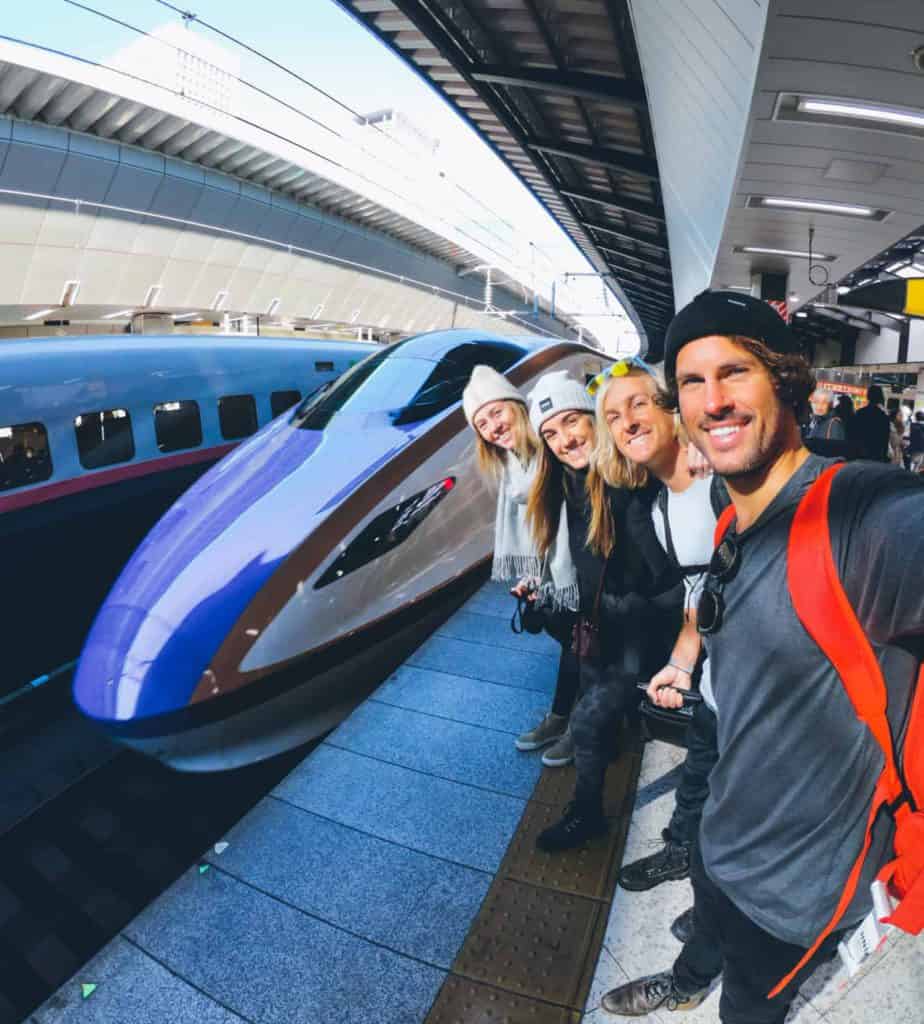
Food & Après
Australia
On the mountain, food prices in Australia are akin to airports: overpriced and not of the greatest quality. The variety is there, you can get anything from salads to kebabs and burgers. However, what you get for your money can often leave a bad taste in your mouth and if paying for a family, a big hole in your wallet. The après scene on the mountain is fun, with a variety of bars to choose from at most of the mountains. The nightlife in off-resort towns like Jindabyne offers everything from live music, to dance beats and there are plenty of of haunts to play the night away.
Japan
The on-mountain restaurants in Japan also leave little to be desired. Your standard fare of curry and rice or a watery bowl of ramen won’t exactly tantalise your tastebuds, but you won’t notice it too much on your back pocket. Step away from the mountain and Hakuba’s restaurant scene will really delight with an amazing array of Japanese and international cuisine.
From dollar savers to fine dining, you can find a feed for even the most discerning of tastebuds. However, make sure you book as the good restaurants fill quickly.
As with most of Japan, the après scene is growing and Hakuba has new spots opening every season. On the mountain, Hakuba has a few Corona bars popping up, and this year on Nakiyama there is a new two-level bar called Hakuba Après! The townships of Happo and Echoland however do offer plenty of après and nightlife options. Our top picks are The Rabbit Hole, in Upper Wadano Bar Refuel at Happo Village and Mockingbird at Echoland when your thirst needs satiating.

Culture
Australia
A trip down the snow in Australia is just that: a trip down the snow. You can have a great time skiing, tobogganing, making snowmen and having snowball fights but at the end of the day, your holiday is focused solely on the fact that you are there for the snow. And if you are not there for the snow you’ve been dragged along against your will.
Japan
A trip to Japan, for those who are die-hard powder hounds, might focus on the same thing: the snow. However, beyond the snow, Japan offers a unique opportunity to experience a country steeped in history and culture. From centuries-old castles like that in Matsumoto to ancient temples in Kyoto and traditional onsens, there is so much to be experienced. Read our full guide to the hidden gems of Hakuba to explore beyond the slopes.
While in Japan you could choose to separate your holiday into buckets like ‘experiences’ and ‘powder’. Or using Hakuba as your base, head off on day missions to places like the Jigokudani Monkey Park – here you’ll see the snow monkeys frolic in the hot onsen baths as they have for decades. You’ve got plenty of options.

Skiing in Australia vs. Skiing in Japan: The Costs
There are three constants in life: death, taxes and rising lift ticket prices (in Australia anyway). Perhaps one of the most defining factors worth considering when deciding whether you’re going skiing in Australia or skiing in Japan is lift tickets. The cheaper the lift ticket generally means the more skiing you can add to your trip.
A day ticket for Thredbo for the ’23 season starts at $189 for an adult and $99 for a child under the age of 12. Falls Creek in Victoria is slightly more at $219 for an adult and $120 for a child under 18. Ticket pricing across Australian alpine resorts is and has always been expensive.
Lift tickets in Japan
Look at the comparable cost of lift tickets in Japan and you’ll notice this, for Australians, is a real dollar saver when planning an international ski holiday. Lift ticket prices in Japan are reflective of the domestic economy and can seem extremely cheap to Antipodean travellers but are priced comparatively in a competitive market. An adult day ticket at Hakuba’s largest resort Happo-One for the 23/24 season will cost you ¥6,500 or around AUD$70*. Or, a day ticket at powder mecca, Cortina, at the northern end of Hakuba is ¥5,000 per day or AUD$53*, less than a third of the price of an adult day ticket at an Australian resort.
With that said, let’s consider some of the costs of a ski holiday to the Australian slopes and comparable costs of a powder holiday to Japan:

While we’re not exactly comparing apples to apples, a ski holiday in Australia may have significantly different motives and logistical considerations than one in Japan. It is surprising to understand that a one-week holiday to Japan (including flights) is only just over $250 more than a week down to the snowy mountains. There are certainly pros and cons on both sides of the coin and if you could afford a holiday both in Australia and Japan then do that! But, Japan, by sheer weight of experience takes the cake here. Not only is it basically the same price, but the snow is deeper. And we’ll take that any day of the week.
Interested in Skiing in Japan?
If you’re ready to experience all that Japan has to offer, check out our Japan Travel Page and explore the resorts on offer. If Hukuba tickles your fancy, complete an enquiry form and our team will happily create a custom package for you or discover our packages below:


